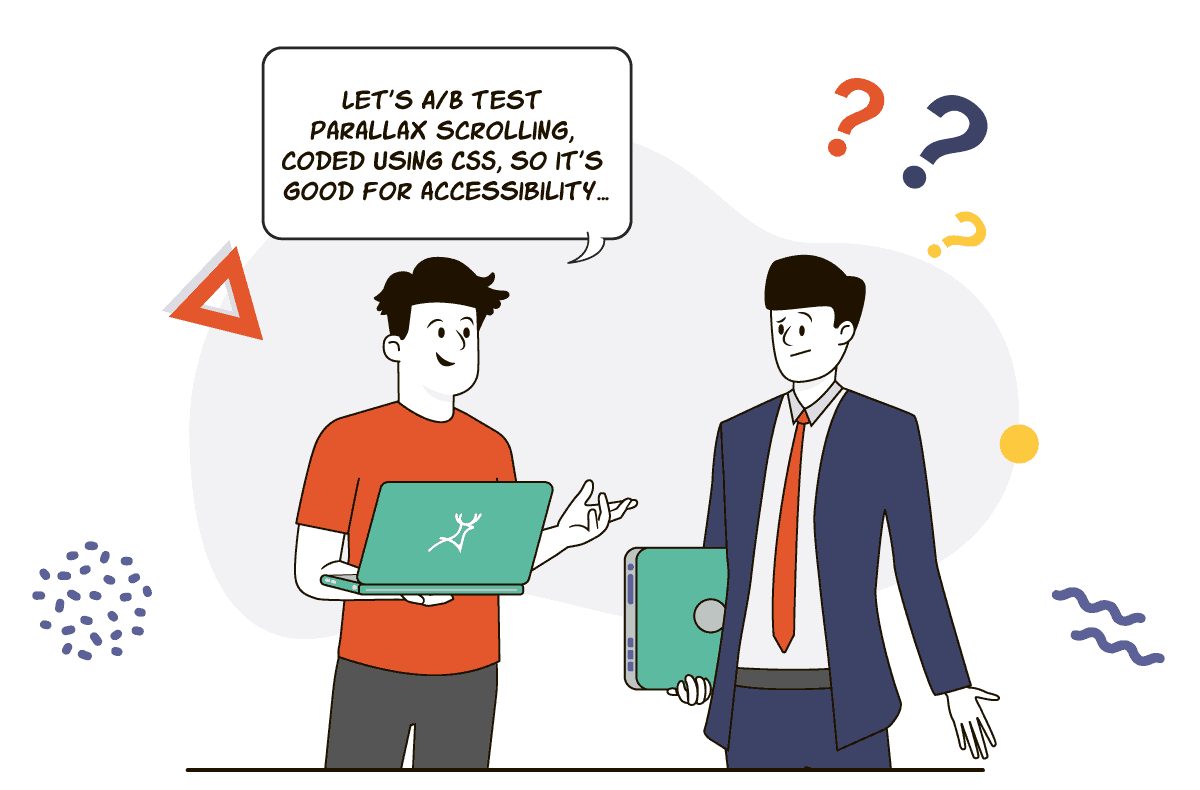10 Terms to remember when talking to a web developer

I rewatched the classic movie Ghost last weekend, which is about Sam (Patrick Swayze) and Molly (Demi Moore). When Sam was still alive, he never said “I love you too” back to Molly. He always said “Ditto”.
Do you have any inside jokes or secret codes among your friends and family?
When he died, his ghost was able to communicate with Oda Mae, a psychic (Whoopi Goldberg).
Oda Mae went looking for Molly and tried to convince her that Sam was communicating with her. Molly refused to believe until Oda Mae said Ditto, a term of endearment shared only by Sam and Molly.
Language creates bonds between people, and in order to fully understand someone, you must understand the terminologies or “codes” used to name their tasks, processes, and ideas.
Web designers and web developers frequently communicate, especially when creating a website. As a designer, you must understand the back end of a website and how it interacts with the design you will create.
Knowing the industry’s keywords will allow you to create better web designs for your clients and give them peace of mind that their brand is in good hands. Here are ten key terms in web design, each with a brief explanation.
HTML, CSS & JavaScript
HTML, CSS & JavaScript are the three most important programming languages you need to know as a web designer.
HyperText Markup Language or HTML allows you to create web pages and use them as a platform for other languages such as CSS, JavaScript, and PHP.
CSS (Cascading Style Sheets) is also a markup language that allows you to organize your HTML code into logical blocks and add styles to elements on the page.
JavaScript is a programming language that helps create interactive websites by allowing users to interact with different elements on the page without reloading or refreshing their browser window.
ARIA
ARIA stands for Accessible Rich Internet Applications. It’s a set of guidelines that helps developers create web applications accessible to people who use assistive technologies.
These guidelines can help you create web applications that work well with screen readers, other assistive technologies, and people with disabilities.
Responsive design
Responsive design lets your website adapt to different screen sizes. Whether your visitors are on their phones, tablets, or desktop computers, they’ll have a consistent experience.
Visual hierarchy
Visual hierarchy is how a website’s design is organized to direct viewers’ eyes and attention.
The most important element should be at the top of the page, while less important features are placed lower down.
This will enable the reader to focus on what’s most important first and make quick decisions about whether or not to continue reading your content.
Infinite or parallax scrolling
Infinite or parallax scrolling is a technique that allows users to scroll through a website without the need to click on a link. Instead, they can scroll horizontally or vertically, and the background image will move following their movements.
This is an excellent way to attract users to your site because it provides an engaging experience that keeps them engaged longer than other websites.
Semantic markup
Semantic markup is the process of using HTML tags to provide meaning to a web page. This is done by using tags that describe the content of a page, as opposed to generic tags like <body> or <p>.
Semantic markup adds structure and meaning to your content, which makes it easier for search engines and readers to understand what’s on a page.
SaaS
“Software as a Service” is a business model for cloud computing where users pay to use an application rather than owning it.
SaaS allows businesses to access software applications remotely as needed. This is hosted on the provider’s servers and available through a web browser or mobile app.
Information Architecture
Information architecture (IA) organizes and structures content so users can find, read, and understand it. IA aims to ensure users can find what they’re looking for when interacting with a given website or application.
Server-side scripting
Server-side scripting is a way of creating websites that involves writing a script and uploading it to your web server, which executes the script by interpreting it.
This allows for more complex functionality in your site than you could achieve with client-side scripting.
Server-side scripting is important because it allows you to create more dynamic websites and can help you customize your site to suit your needs.
A/B testing
A/B testing is a method for determining the effectiveness of changes to a website or app. By running different page versions and comparing their performance, you can select which works best and optimize your site accordingly.
Walk the talk
The terms listed above will make it easier for you to discuss what goes into creating a web page. It will also give you a general idea of how your design can be improved based on the client’s needs.
Although you do not need to have in-depth knowledge of these topics as a web designer, mentioning them strategically will help you show your expertise.
Most people use these terms when discussing web design, and knowing what they mean is essential if you plan to work in this field.


